Earth Museum Project Description and Aim
The Earth Museum is a not-for-profit organisation. It aims to provide a virtual space where heritage and history stories can be shared throughout the world and with the people that will give the stories meaning. They also try to connect their stories and opportunities for their customer's engagement as well as how museums and heritage sites rarely discuss the global connections in their stories. In their own words "How lamps burning train oil to illuminate the textile factories of 19th century Britain are connected with the colonial appropriation of Maori lands in Aotearoa New Zealand or the near extinction of whale species in the Southern Oceans".
The founder and executive director Janet Owens were inspired by her 30 years working in museums and the cultural heritage environment as well as researching the journeys of certain people like Charles Darwin.
As their website is new, the museum has reached out to universities to assist in adding some models to test this prototype. There were different options available to students as shown below.
Set 1 - To provide 3 x 3D models: National Holocaust Centre & Museum
- Shoes worn in a concentration camp
- Medal awarded to German mothers during WW2 by the Nazi regime
- Gold watch
Set 2 - To provide 2 x 3D models: Chesterfield Museum
- Crooked Spire
- Napoleonic Box
Set 3 - To provide 5 x 3D models: Isle of Wright Heritage Services
- Thrust 2 Land speed record car
- Thrust 2 Land speed record car steering wheel
- Roman long-nosed hound figurine
- Tin opener invented by Henry Knight
- Skillet (ornate long-handled pan)
Set 4 - To provide 1 x 3D models: Woodhall Spa
- Hotel model in a case
I selected set 1, linked to the National Holocaust Centre & Museum, and option 2 for the medal as I have a wide-ranging personal interest in history and have medals at home awarded to my ancestors from the World Wars.
Organisation
The National Holocaust Centre & Museum is based in Laxton, Nottinghamshire. The museum was created by James and Stephan Smith because when they visited the National Holocaust Museum in Israel, they were stunned by the information that was there. They believed that their school and university education had been lacking as there had never been an opportunity to consider what the holocaust meant for the individuals. When they returned, they knew that the holocaust had to be taught, and they were keen to see this done for students learning about this at school.
Description of object
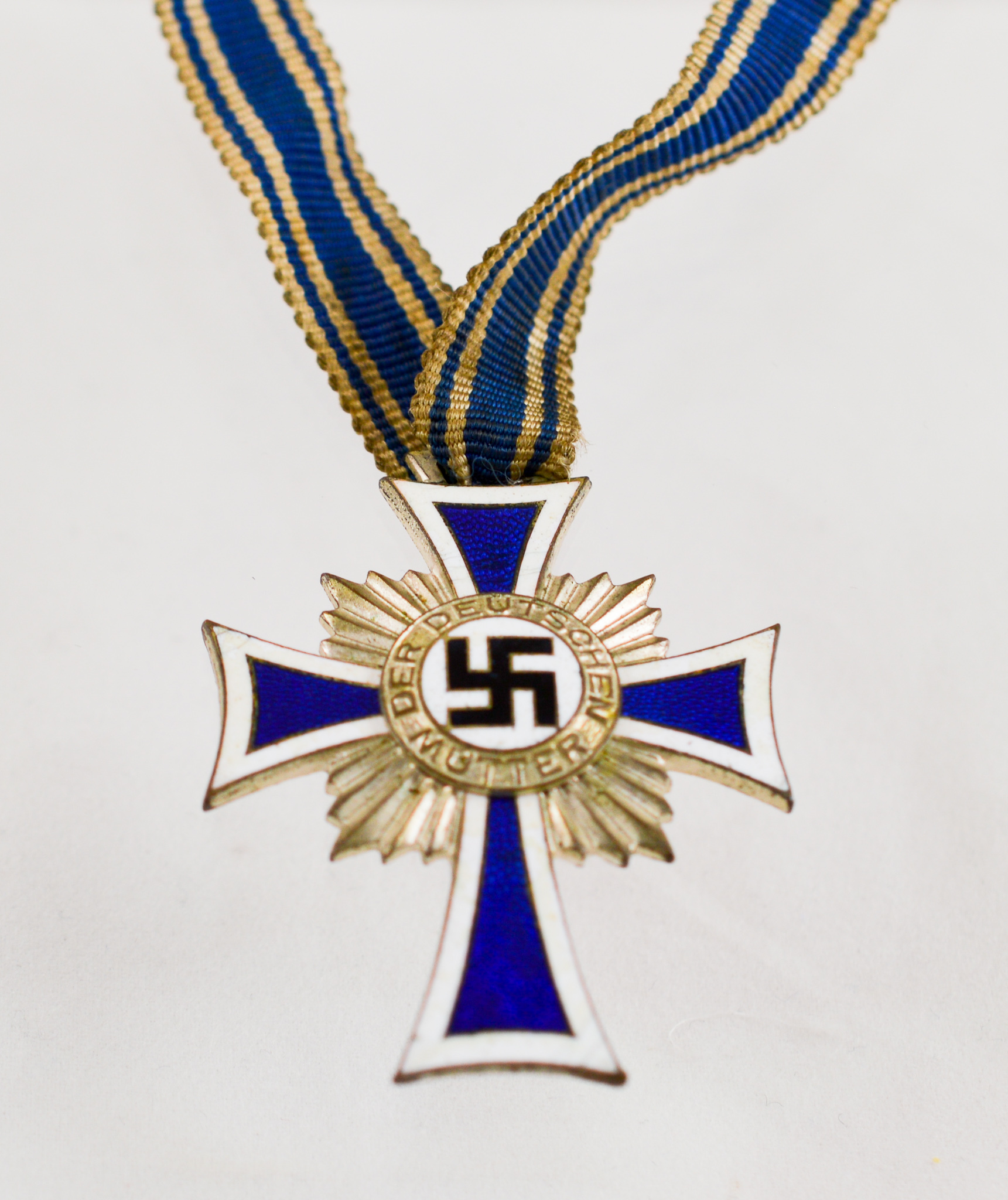
fig.1 - The Cross of Honour for the German Mother
The Cross of Honour for the German mother (see picture above) was an award given to German women by the Nazi Party for producing children. The award was initially only for mothers in Germany, later including women of German ethnicity in Austria and the Sudetenland (Czech Republic). The medal was established on the 16th of December 1938, with 3 medals provided. A bronze medal was awarded for 4 - 5 children, silver for 6 - 7, and gold for 8 or more. It was a part of Hitler's initiative to encourage the growth of the Aryan population and to reward motherhood.
The requirements to receive the medals were that you were from a fully Aryan family and a child with what were judged to be the "right" attributes, for example, the baby could not have any "defects", disabilities, or have any foreign background like being Jewish.
I selected the bronze version for my medal. It is a blue cross with white enamel on the edges and bronze edges to the white and blue with a bronze circle with a white background bearing a black swastika on top of a bronze sunburst, with the words "To the German mother". It was engraved on the back with a date of 16th December 1938 plus the signature of Adolf Hitler. It has a 70cm blue and white ribbon attached to the medal
Process
This was a 15-week project that will also include the Easter break with the deadline being the 9th of May.
The beginning of this project was to decide what model we wanted to develop. My first choice was to model the medal because of my interest in the era. However, as someone else from my group showed a preference for that, I initially swapped to creating a watch. I was pleased when they changed their mind, and I got the opportunity to design the medal after all. I then researched the history of the model as seen above. The one area I was not fully certain about was the dimensions of the medal. I wanted this to be confirmed by the museum rather than what I found on the internet.
We had a call with Janet Owen who is my client contact at the museum to get more clarification on who we were working for and a little more about the background of our objects. I asked if I could get any dimensions from her but did not receive a reply. I then contacted the national holocaust museum to request if I could be passed on to anyone that could give me any dimensions. I then received the information I needed to work with. I did send an additional email for supplementary detail but that was not supplied.
For this model, I decided to use fusion 360 CAD software and started on the Friday of the same week I received the dimensions. I created a box with the specific measurements and then place a photo of the medal in the box to act as a template. I created 4 versions of this to make the sunburst angles more equal but each attempt became more difficult and less satisfactory to me.
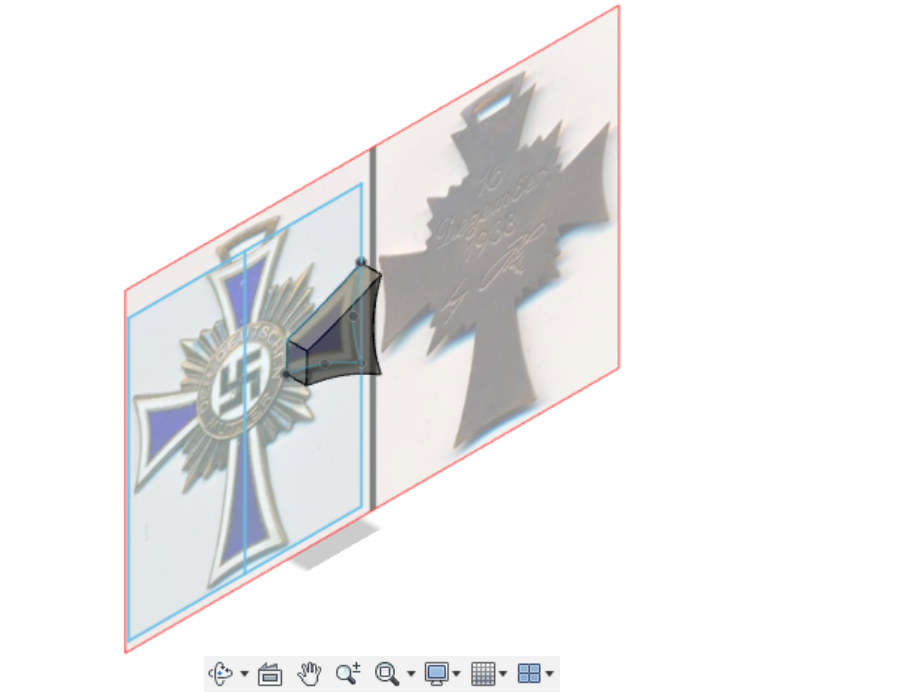
fig.2 - Fusion 360 model
I then worked in partnership with my lecturer to restart the piece on ArchiCAD as she had more experience in this software. The model was sketched again, and the focus was on the sunburst. Unfortunately, I do not have any records or screenshots for the method of developing this. Once one part of the sunburst was completed it was then copied and rotated to the other corners. The next part was the cross design. This followed the same process as the sunburst.
The circle was then added with the swastika. Once the circle was finished the words were added that surround the swastika.
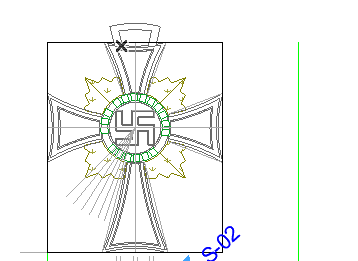
fig.3 - ArchiCAD Sketch
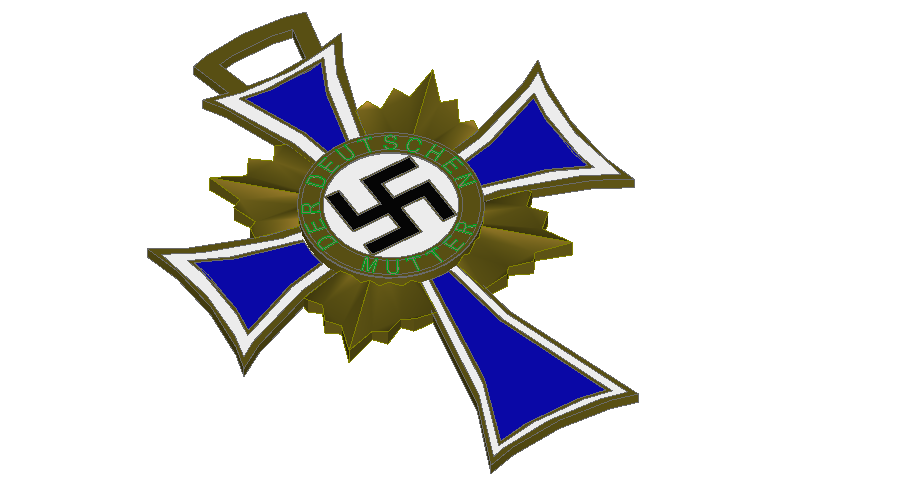
fig.4 - ArchiCAD Model
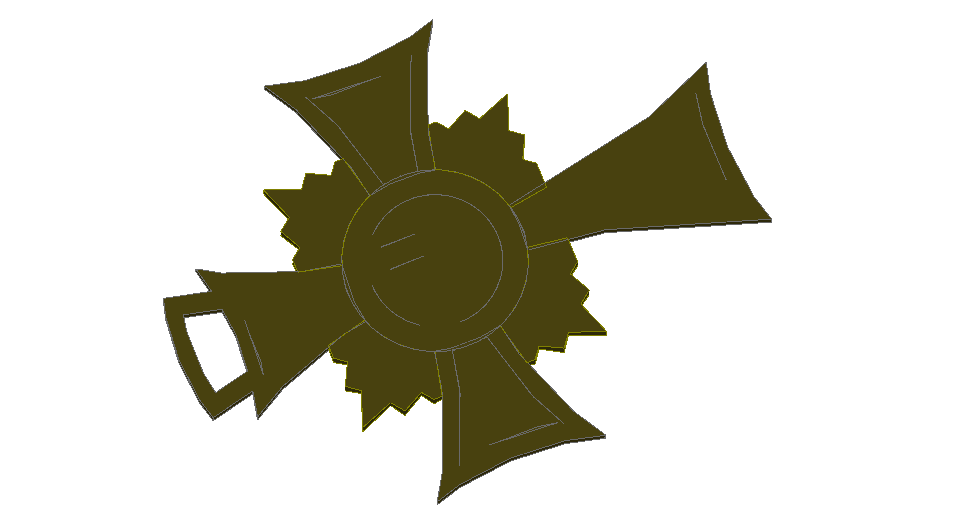
fig.5 - ArchiCAD Model (Bottom)
The last part was to show the engraving for the back of the medal, based on a picture that showed the detail. Spline and lines were used to create this through great care. I required some more expert help with this, as I would have lost a majority of my remaining time doing this.

fig.6 - ArchiCAD Model Sketch (Engraving)
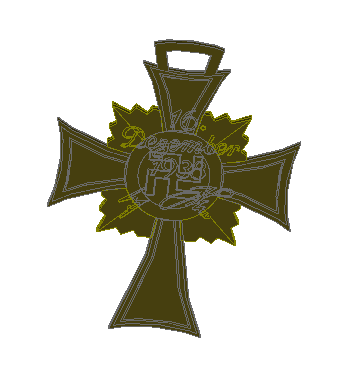
fig.7 - ArchiCAD Model (Engraving)
After the engraving was completed, the next stage was to see if the material (bronze) could be placed on the piece. This was a success, but I forgot to add where the ribbon would be attached. This was done quickly with arches, spline, and lines.
I then tried to transfer the model to fusion 360 to create the ribbon, but when I tried to render the piece, the material covered all faces of each part rather than only one face. This created a problem as the back needed to be one material. With the help of my lecturer, this was solved by cutting the piece in half with the back being completely bronze.
.png)
fig.8 - ArchiCAD Model (Fusion 360)
.png)
fig.9 - ArchiCAD Model Material (Fusion 360)
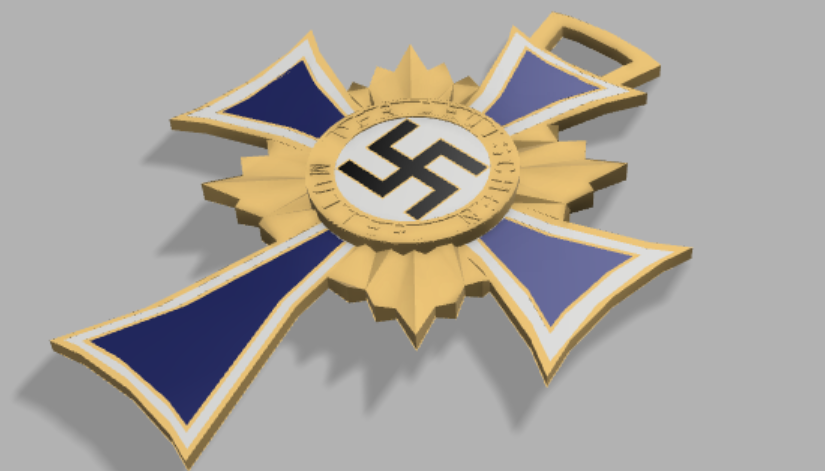
fig.10 - Fusion 360 Rendered
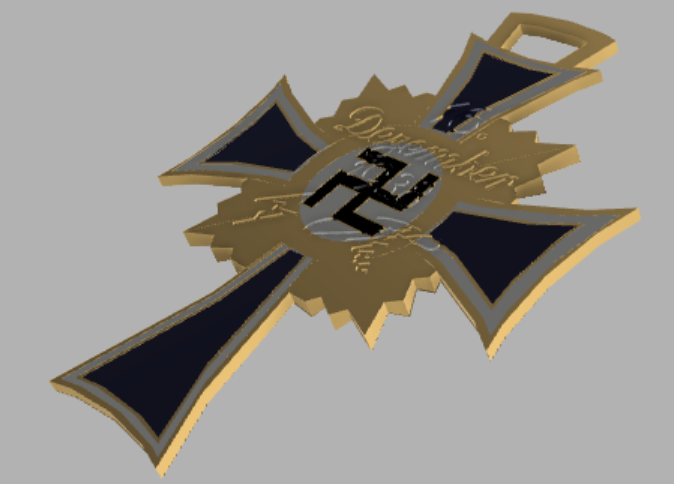
fig.11 - Fusion 360 Rendered (Back)
I then tried to make the ribbon with multiple sections to bend it but could not find a way to do that, even with the help of tutorials.
I was recommended an alternative software to add the ribbon to the model. Blender was chosen and I was shown how I could create the ribbon by a 3D student called Cherry Hau who has more experience with this software, I also retried the work again on fusion 360 using the form command but without much success.

fig.12 - Ribbon (Blender)
After not moving forward with the fusion model I went back on Blender and received help again from Cherry. After helping me get the medal into view of the ribbon, I started to move them into a position where they fitted together smoothly and added the material to the piece. This has now been completed.
Here is the final render on Blender.
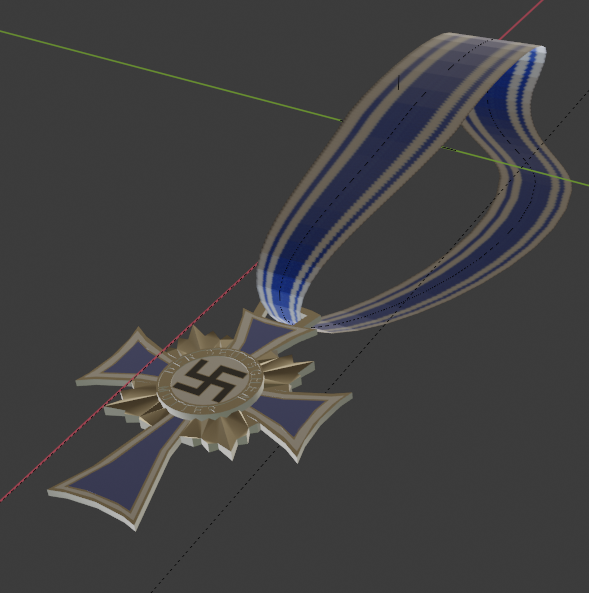
fig.13 - The Medal in Blender
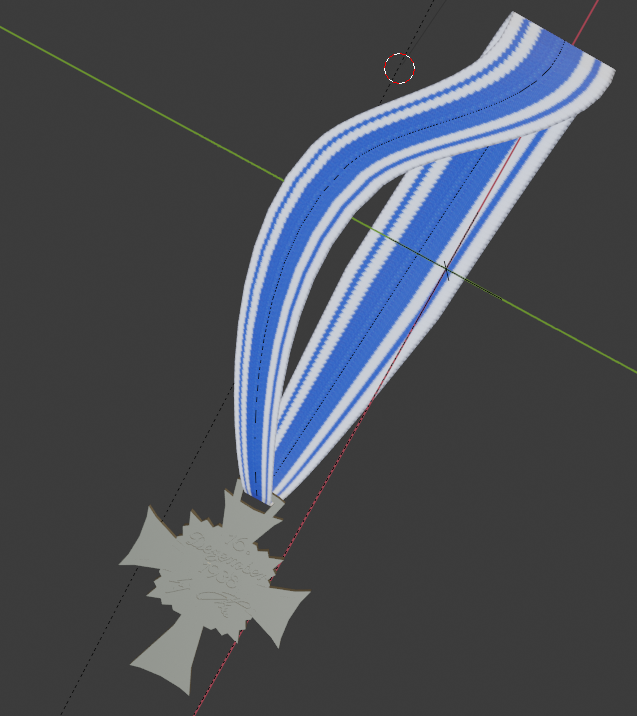
fig.14 - The Medal in Blender (Back)
Conclusion
This project has been hindered a lot this semester with the other projects taking priority as they were new to me and required more time, but I am happy with where it ended and what I have created. This has also helped me start to learn Blender, a goal I set myself for my third year. While I do not take full credit for the work that has been produced, I am happy with the completion of the medal and have something to present to Janet and The Earth Museum.